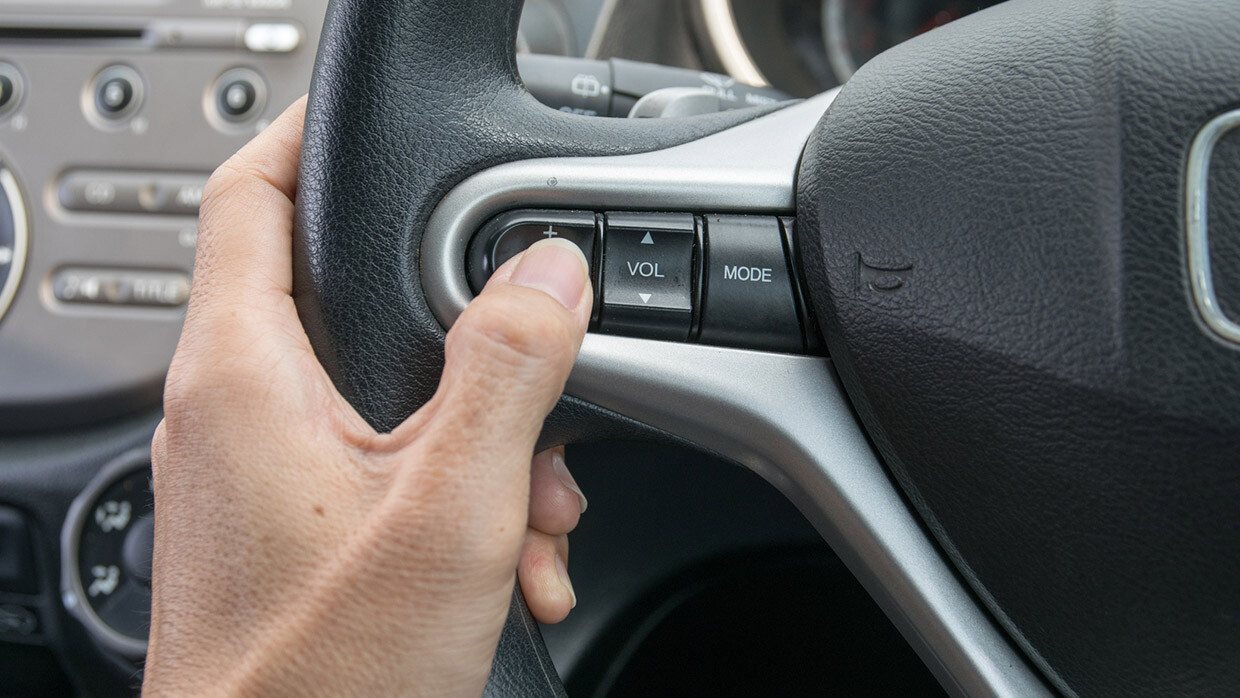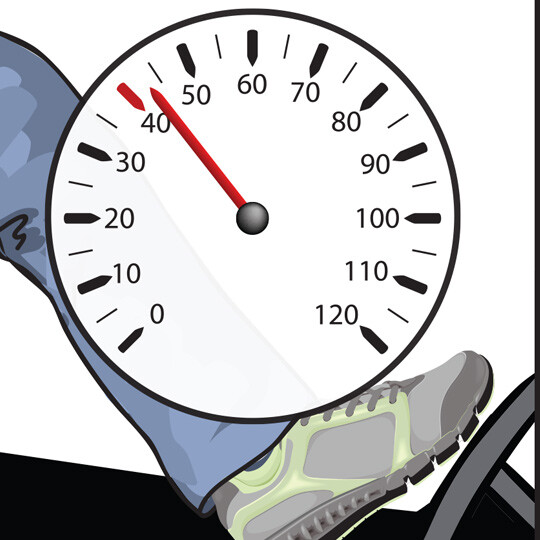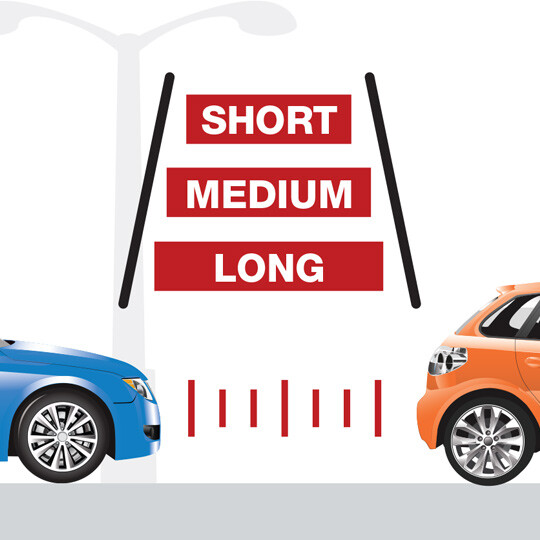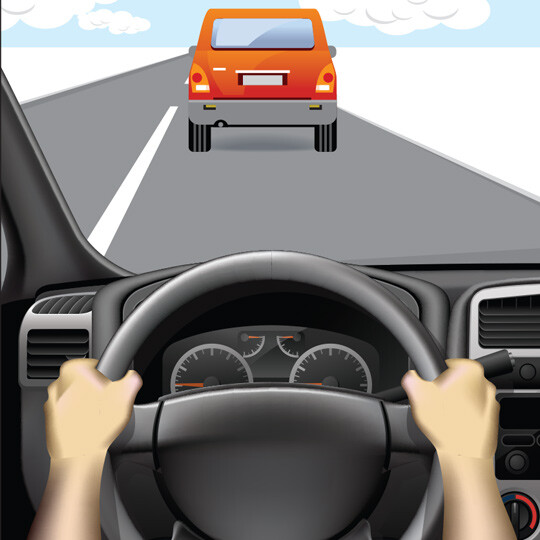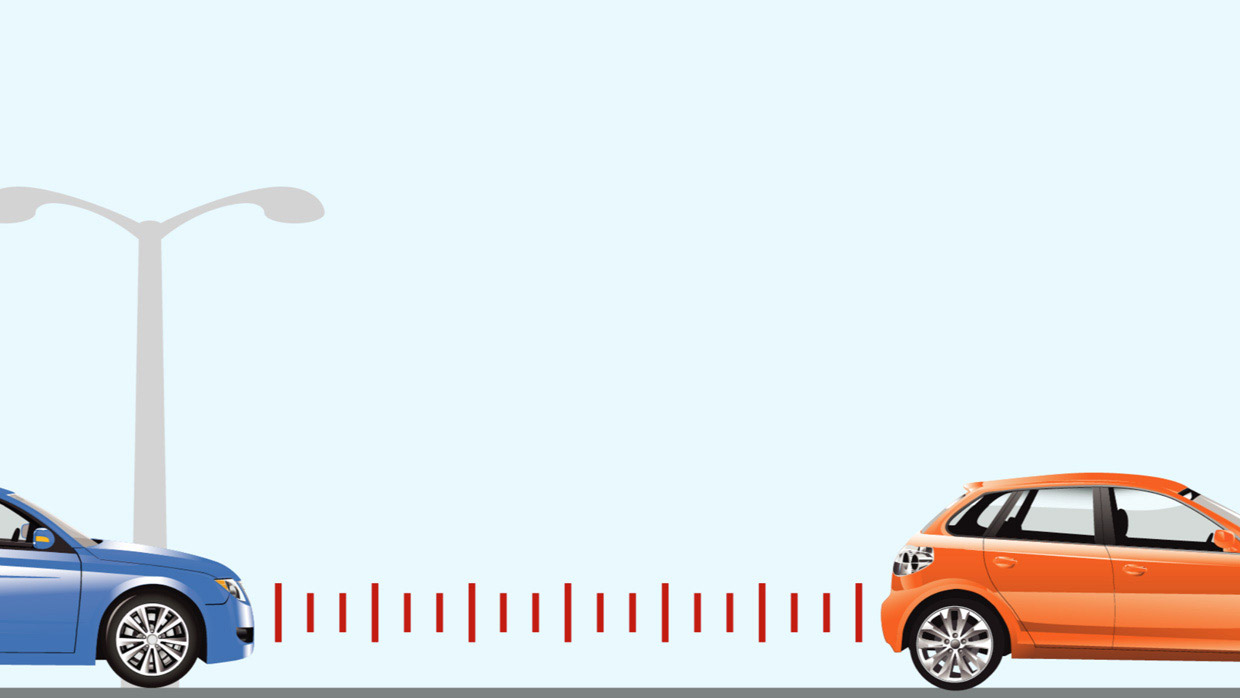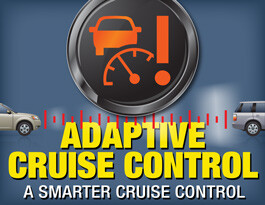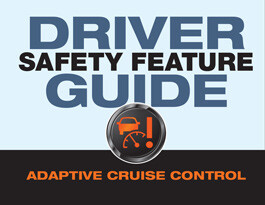Adaptive Cruise Control
Not only maintains your set speed, but your following distance as well; provides some limited braking.
What It Does: Automatically speeds up and slows down your car to keep a set following distance relative to the car ahead. Provides some braking.
What It Does Not Do: You need to understand how much braking the system can do—some will brake to a stop, most will only brake so much.

